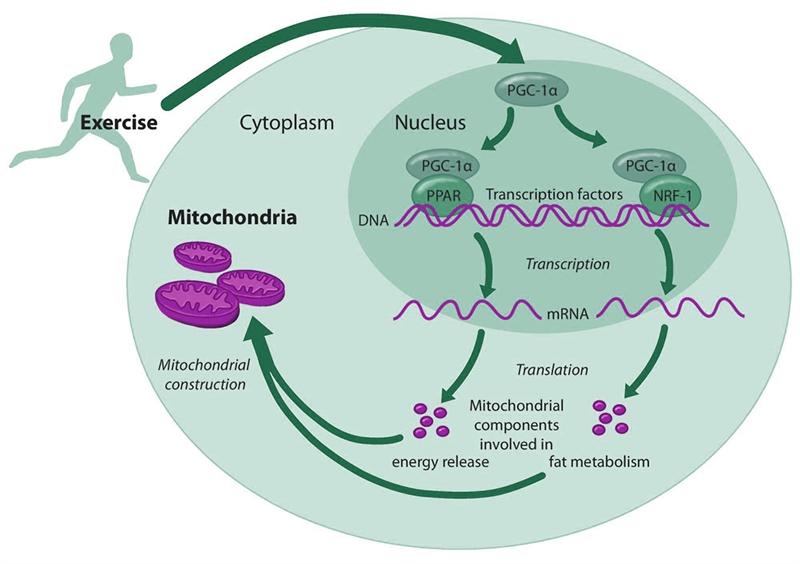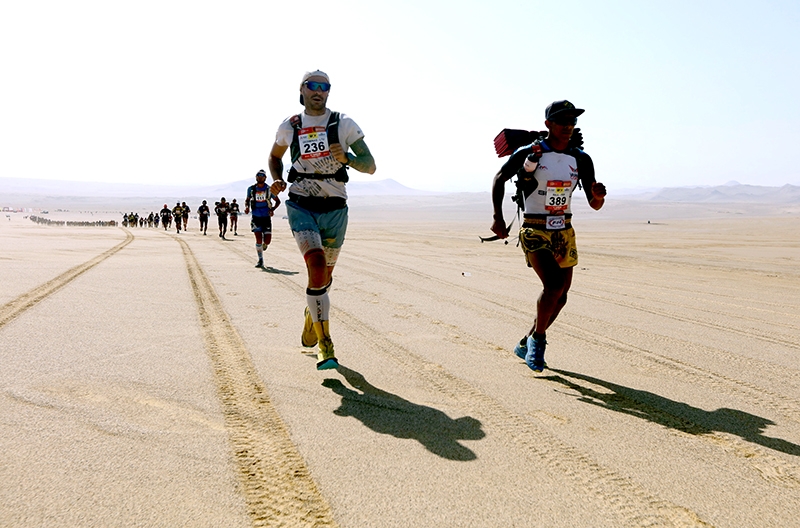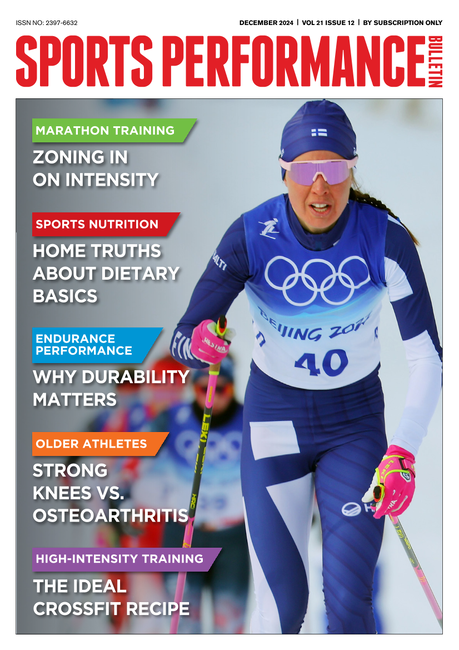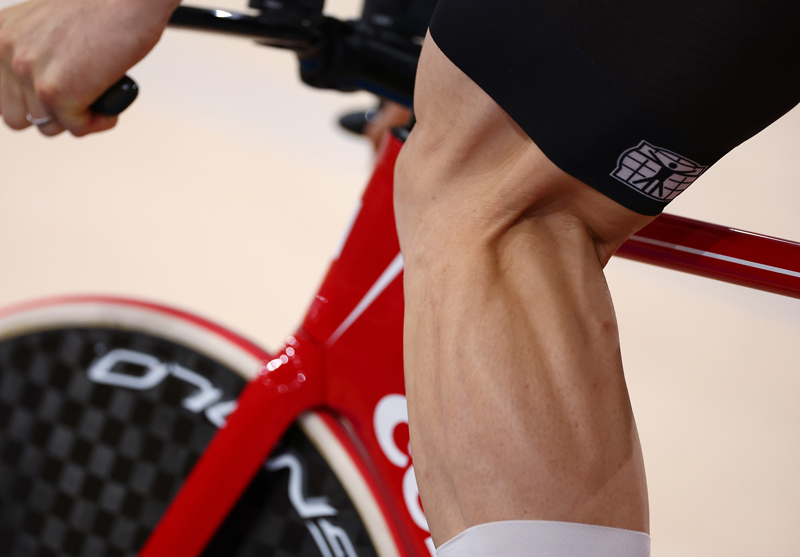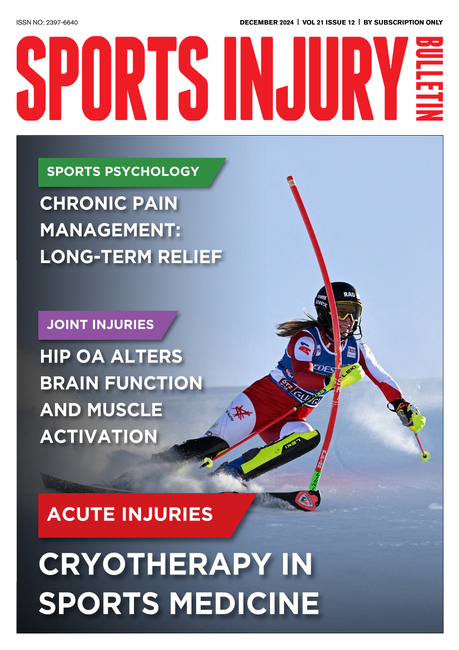You are viewing 1 of your 1 free articles. For unlimited access take a risk-free trial
Mile after mile: is it better in the long run?
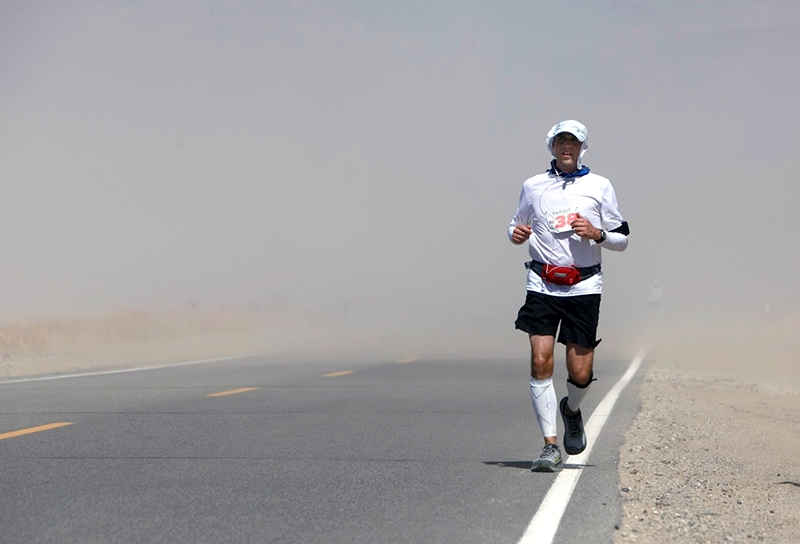
Is a high-mileage routine a recipe for running success or injury disaster? John Shepherd looks at the evidence
In 2012, a team of researchers from Sports Health wrote that: “Running injury rates increase significantly when weekly mileages extend beyond 40 miles.”Sports Health 2012 Nov;4(6):485-95. But for many serious endurance runners, this is not that high a weekly mileage. Indeed, many elite marathoners see regular 100-mile weeks as akin to the Holy Grail for successful race performance. Given the research quoted above, these runners should therefore expect to suffer from regular injuries. But is this actually the case, and perhaps more crucially, is there a certain number of miles per week that produces little or no benefit once exceeded?The case for high mileage
The rationale for high mileage theoretically and historically has a lot to do with legendary running coach Arthur Lydiard (see figure 1). Lydiard believed in regular 100-mile weeks of aerobic running to provide a base from which to run distances as varied as the half-mile and marathon. He named this the ‘long slow distance’ method. His reasoning was that in order to run long distances you need to develop great heart and lung capacity, excellent tolerance to fatiguing lactate; more efficient slow-twitch muscle fibres (great for endurance), ‘grow’ more muscle mitochondria (cellular power plants) and improve mental fortitude.Figure 1: Arthur Lydiard

Logic and research (as indicated) suggests that high mileages can lead to more injury. However, there could be other factors at play mitigating this. One possibility is that higher mileage runners have a more effective ‘non-injury inducing’ running style compared to lower mileage runners – something we’ll return to laterJ Appl Biomech. 2014 Oct;30(5):649-54.
A common tenet among distance runners is that you should not increase your weekly mileage by more than 10 percent. With that in kind, researchers set out to put this to the testJ Orthop Sports Phys Ther 2014;44(10):748. The injury history of 873 new runners was monitored over a year, and over this time, 202 suffered from an injury. Injury incidence was matched to weekly percentage increments in mileage (monitored at 10%; 10%-30%; and 30% plus).
Perhaps not surprisingly, the runners who increased their weekly mileage by more than 30% sustained the most injuries. Running pace was also a factor, with faster runners suffering more from runner’s knee, iliotibial band syndrome and shin pain. Thus, and somewhat obviously, when building mileage, it’s important to progress methodically without sudden increases in mileage and/or pace (see case study Rachel Dench for more on this).
Whether you can handle high mileages has a lot to do with genetics. Your genetics will also determine how much adaptation takes place, and there will come a point at which significant additional adaptation peters out with increasing mileage. For example, once you have gained an ‘x’ percentage increase in muscle mitochondria (known as ‘mitochondria density – see figure 2)’), it may be worthless upping mileage in an attempt to produce more as your muscles will already be near the theoretical maximum and your maximum oxygen processing capacity (VO2max) is unlikely to increase much more.
Figure 2: Training and mitochondrial density
One of the ways that training stimulates improved endurance capacity is via an increase in mitochondrial density (ie more ‘energy factories’ per unit volume of muscle. Endurance training causes the release of a signalling molecule called PGC-1α. This then stimulates genes in the nucleus of a muscle cell to produce the proteins required to construct new mitochondria, which are then assembled in the cells, increasing oxygen processing and endurance capacity.
World-renowned exercise physiologist David Costill has concluded that ‘when you go from an untrained state to a trained state, running 30 to 40 miles per week, your VO2max and the measurements commonly taken from muscle biopsies (eg mitochondria density) increase. However, as you increase up to about 60 miles per week, things start to plateau. The exact mileage at which this plateau occurs depends on the individual but beyond about 60 to 70 miles per week, there's not much extra physiological change taking placewww.active.com/running/articles/distance-running-how-many-miles-should-you-run?page=2. Costill’s thoughts are in line with other sports scientists such as Bruce Tulloh and running guru Professor Tim Noakes.
A need for speed
What about training speed when you increase mileage? Alberto Salazar, one of the world’s great marathoners, used to put in very, very high mileages. He believed (at the time) that this would enhance his ability to keep going for 26 miles - after all, the marathon only has around a 5% anaerobic contribution in terms of energy utilisation. Fast forward nearly two decades, and now as a leading endurance coach, Salazar sees things quite differently. In charge most famously of Mo Farrah, he specialises in producing very fast and enduring athletes by prescribing heavy-load resistance training and doing speed work. These requirements are less necessary for an attack on the marathon; nevertheless, they do show a change in thinking from one of the world’s leading endurance coaches – ie the need for speed as well as mileage.Case study: Steve Jones

Elite runners inevitably put in the most intense miles. Steve Jones, who broke the world record for the marathon 1984 (in 2hrs:08mins:05secs - still the British record), was in many ways ahead of his time. The Welshman approached the marathon from a 10,000m runner’s perspective (which he was). He believed that it was the intensity of the training that really mattered, as opposed to simply accumulating slower miles. Jones’s weekly mileages were relatively low (see table 1), but his training week included four speed orientated sessions, such as track intervals or cross-country races. Thus it’s important to ensure that you include at least some faster running workouts in your schedules from time to time. Bear in mind though that training too intensely can be as injury inducing as too many miles, so exercise caution!
TABLE 1 TYPICAL EXAMPLE OF STEVE JONESS TRAINING WEEK
| Day | Morning | Afternoon |
|---|---|---|
| Sunday | 24-32km (15-20 miles) at 3:45/km | 19km (12miles) at 3.07/km |
| Monday | 12-16km (7.5-10 miles) at 3.07/km | 10-16km (6-10 miles) |
| Tuesday | 11km (7 miles) including 4x5min hard | Cross-country or track race |
| Wednesday | 11km (7 miles) | 10-16km (6-10 miles) |
| Thursday | Hills | 8-20km (5-12.5 miles) |
| Friday | 10-12km (6-10 miles) | Race or track session (16x1min or 10x2min or 16-24 x 45sec) |
| Saturday | Rest | |
| Total | 135-180km (84-111 miles) | #colspan# |
The weekly long run
Anyone looking to achieve a fast 26-mile time will have to start to include longer runs in their training – perhaps approaching 20 miles - when the race 100ms. It’s about getting used to the mental and physical demands of time on the feet, as well as making physiological adaptations. Therefore, while the long run needs to be gradually increased, this need not be built on very high mileages (see Tony Ganio case study) – helping to reduce the likelihood of injury. This is confirmed by research. When scientists looked at the kinematic effects of longer runs on lower limb biomechanics and injury causation, they discovered that the completion of a weekly sub-maximal pace long run did not result in potentially injurious lower limb biomechanicsJ Appl Biomech. 2017 Jul;33(3):216-221.Distance runners need to do some high mileage work for another reason - improved running economy (RE). RE relates to energy cost and speed of run (see figure 3). A runner who is able to churn out faster miles at less energy cost than a runner trying to maintain the same pace has a higher RE. RE also can be enhanced by resistance training techniques such as plyometrics (see Sports Performance Bulletin issue 357 and also figure 4), which improves the energy-return capacity of the lower limbs’ muscles ligaments, muscles and tendons. Improvements in RE result in faster ground coverage, with less effort.
Figure 3: Running economy and energy cost

For any given speed, runner B uses less oxygen (and therefore less energy) than runner A. Runner B is therefore said to be more efficient or possess better ‘running economy’ than runner A.
Figure 4: Examples of recommended plyometrics exercises for runners

Plyometrics uses the principle of a quick-fire action and reaction between two muscular actions – a shortening and a lengthening one. The former is known as a concentric muscular action and the latter an eccentric one. When you land from a jump (and that includes running, which is basically a series of plyometric leaps from one foot to the next), the muscles, ligaments and tendons, that surround the ankle, knee and hip joint will undergo a stretch (eccentric action), immediately followed by shortening (concentric action) and a release of energy. Over time, exercises like these can increase tissue stiffness, which enhances energy return and improves running economy.
Researchers have looked at whether running high mileage alone (ie without using plyometrics, strength training etc) can increase running economyJ Appl Physiol (1985). 2017 Mar 1;122(3):653-665. The research team compared low weekly mileage runners ( less than 15miles/week) with higher mileage runners (over 45 miles/week), looking at energy return on foot-strike. It was discovered that high mileage runners had greater knee stiffness when compared to low mileage runners and also exhibited greater elasticity around the ankle.
The team also found that the higher mileage group were more efficient ‘energy returners’ at increased running speeds too. So it would seem that higher weekly mileages can enhance running economy. Other research has noted similar findingsInt J Sports Med. 2012 Jan;33(1):53-7. This makes sense given the research previously quoted, which found that higher mileage runners tended to benefit from a less injury-inducing running style.
Strength training and increased mileage
As regular Sports Performance Bulletin readers will know (and as mentioned above), recent research demonstrates that strength and conditioning can enhance endurance performance by improving RE. However, what if you are a regular high-mileage runner who also holds down a full-time job and has family commitments? If you don’t have enough time to include regular strength and conditioning into your schedule, can you get any benefit from shorter training cycles that emphasise these resistance elements?In one study, researchers reduced the weekly mileage of experienced and fit male runners by 58% - reducing it from 63kms per week to around 27kms per weekEur J Appl Physiol. 2016 Jul;116(7):1331-41. This reduction in mileage (over eight weeks) was replaced with strength training and strength-endurance running sessions. Compared to a control group who completed their regular training, the intervention group improved in the follow ways:
- Increased maximal aerobic speed (maximum sustainable flat-out speed).
- Longer time to exhaustion on a fatigue test.
- Reduced levels of blood lactate during an incremental treadmill test.
- Faster 10km times.
Summary
How high should your weekly mileage be? From the research provided, it’s possible to pick out some themes that will help you decide when ‘enough is enough’. Perhaps the most important is that 60-70 miles a week seems to be the point of limited returns for an accomplished endurance runner. Above this, the gains are minimal and the risk of injury is increased. For beginners and medium-level runners however, this number may be even lower as the risk of injury is proportionately higher.Regardless of your maximum weekly mileage, developing an efficient running style using techniques such as strength training and plyometrics is also recommended – as is the judicious use of SOME faster-pace training sessions combined with some easier weeks and rests. Do all this and you should be well placed to run long, strong and fast.
Case study: Rachel Dench

Rachel Dench is a personal trainer with a passion for running, competing in races from 10km to ultramarathons. Her running achievements include: first woman at Trionium Picnic Marathon 2016 (aka the ‘Toughest Marathon in Britain’). As Rachel explains, “Most runners have heard advice that you should only increase your mileage by 10 percent per week in order to avoid injury. This is a good guide when you are starting out. However, for those who have been running for a while or who are working toward an ultra, for example, then the 10 percent rule won’t necessarily work.
At the risk of stating the obvious training mileage requirements will be different depending on whether you’re just planning on finishing a race or aiming for a particular time. Just like any other kind of training, running the same mileage coupled to the same type of runs week- in-week-out is going to mean that rather than progressing, your running performance is going to plateau. Mixing in lower mileage weeks, for example, will not only give your body time to recover and adapt to the longer distances but will also help keep the mental fatigue of training at bay.
Also no two miles are created equal. For example, a trail mile and a road mile are different beasts, just as the benefits you get from running an easy, for example, 9-minute mile versus for example, a tempo 7-minute mile are completely different. Faster miles such as the ones you’d be running as part of a threshold or an interval workout require longer recovery than low intensity, steady long, runs that tend to be the bread and butter of most marathon training plans.
From my own experience, if I’m training for a 50-mile ultramarathon, my weekly mileage will range from about 30 miles on the low side up to about 70 miles per week on the high side. There are many ultra-runners who consistently hit 100-mile weeks but I’ve found that if I go much higher than 70, I run the risk of overtraining and getting injured - which is the last thing you want if you’re working toward a race!
As I get closer to a race, I ‘back-to-back’ my long runs. So for example, a 20-mile run on Saturday is followed by a 20-mile run on Sunday. This gets me used to running with fatigued legs. And this high-mileage weekend is just as much about mental training as it is physical training. However, listening to your body is critical when it comes to increasing mileage. It’ll soon tell you - either through injury or illness - whether you’re overdoing it!”
Newsletter Sign Up
Testimonials
Dr. Alexandra Fandetti-Robin, Back & Body Chiropractic
Elspeth Cowell MSCh DpodM SRCh HCPC reg
William Hunter, Nuffield Health
Newsletter Sign Up
Coaches Testimonials
Dr. Alexandra Fandetti-Robin, Back & Body Chiropractic
Elspeth Cowell MSCh DpodM SRCh HCPC reg
William Hunter, Nuffield Health
Keep up with latest sports science research and apply it to maximize performance
Today you have the chance to join a group of athletes, and sports coaches/trainers who all have something special in common...
They use the latest research to improve performance for themselves and their clients - both athletes and sports teams - with help from global specialists in the fields of sports science, sports medicine and sports psychology.
They do this by reading Sports Performance Bulletin, an easy-to-digest but serious-minded journal dedicated to high performance sports. SPB offers a wealth of information and insight into the latest research, in an easily-accessible and understood format, along with a wealth of practical recommendations.
*includes 3 coaching manuals
Get Inspired
All the latest techniques and approaches
Sports Performance Bulletin helps dedicated endurance athletes improve their performance. Sense-checking the latest sports science research, and sourcing evidence and case studies to support findings, Sports Performance Bulletin turns proven insights into easily digestible practical advice. Supporting athletes, coaches and professionals who wish to ensure their guidance and programmes are kept right up to date and based on credible science.
